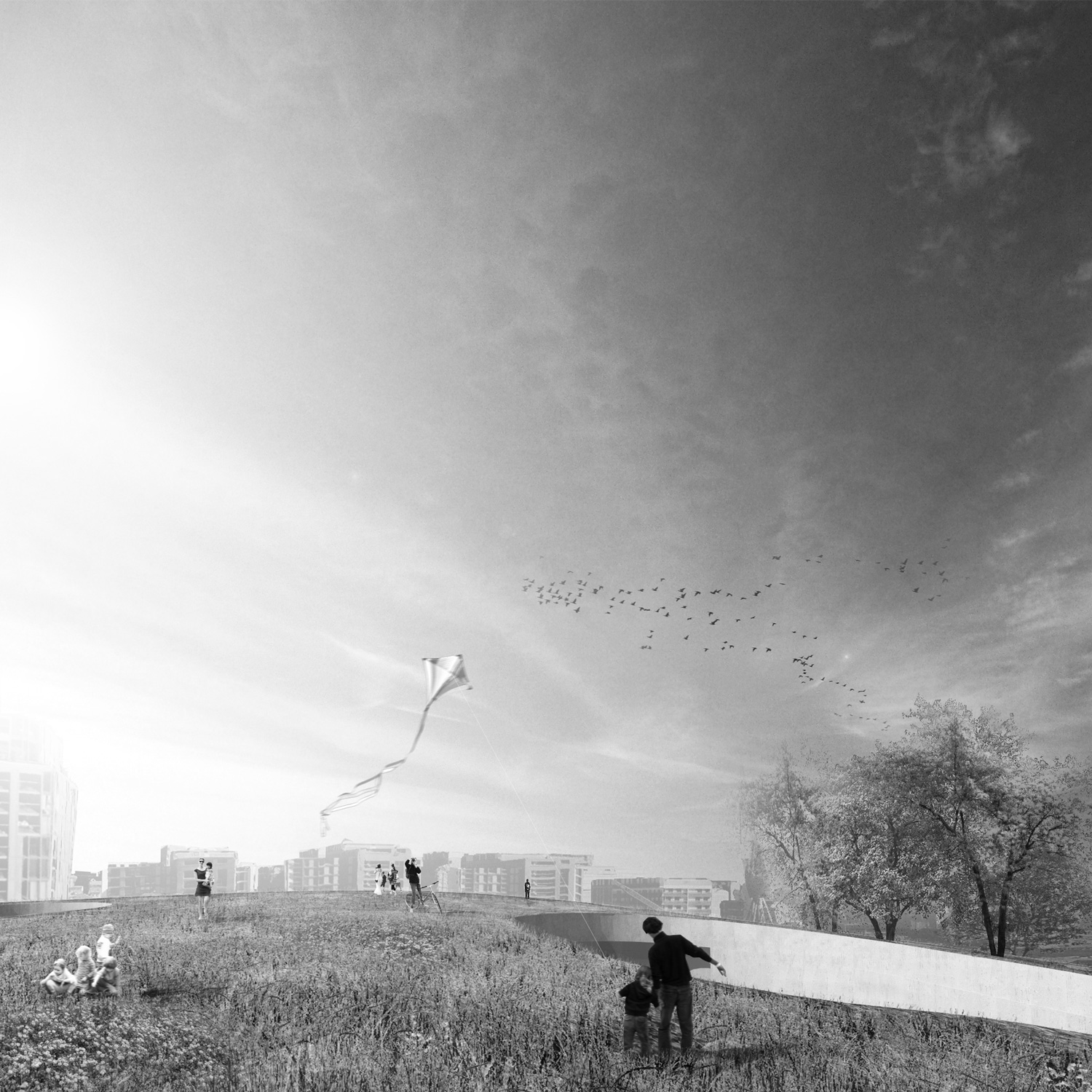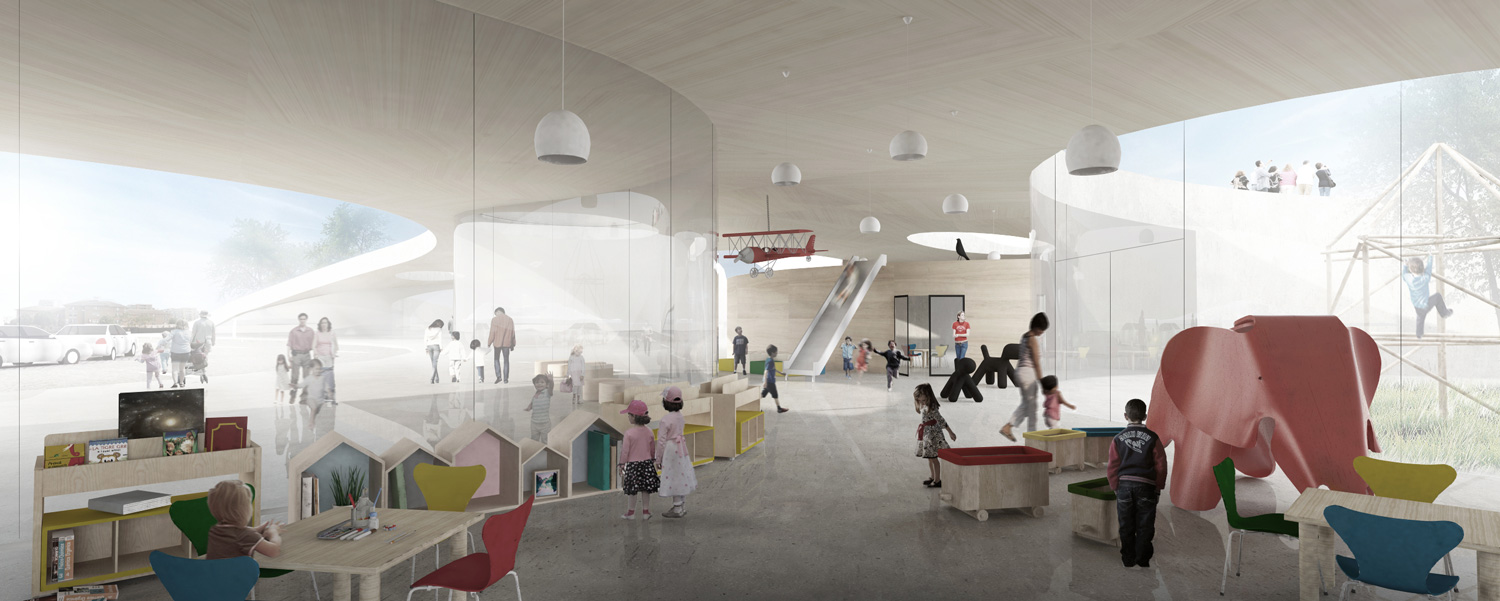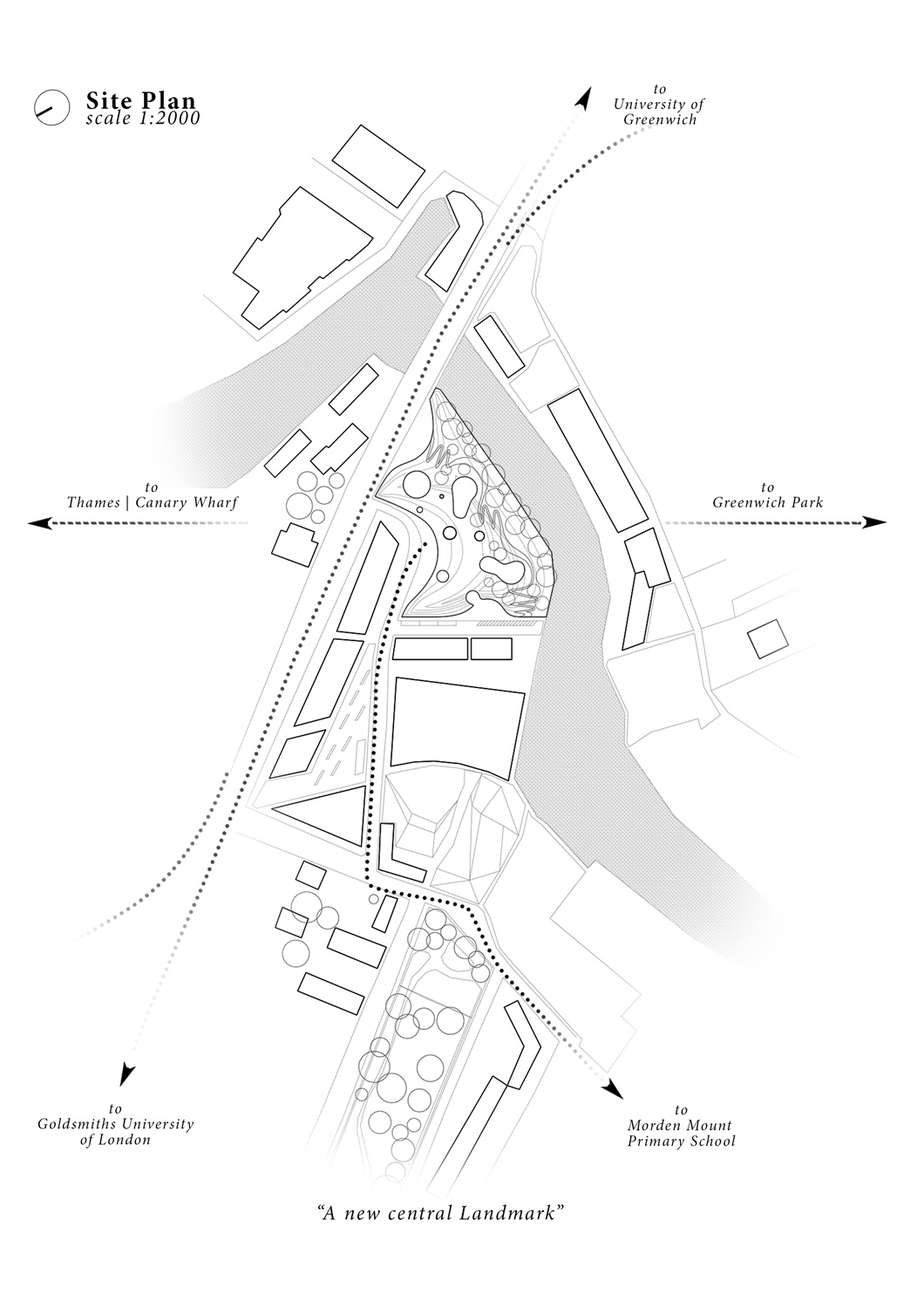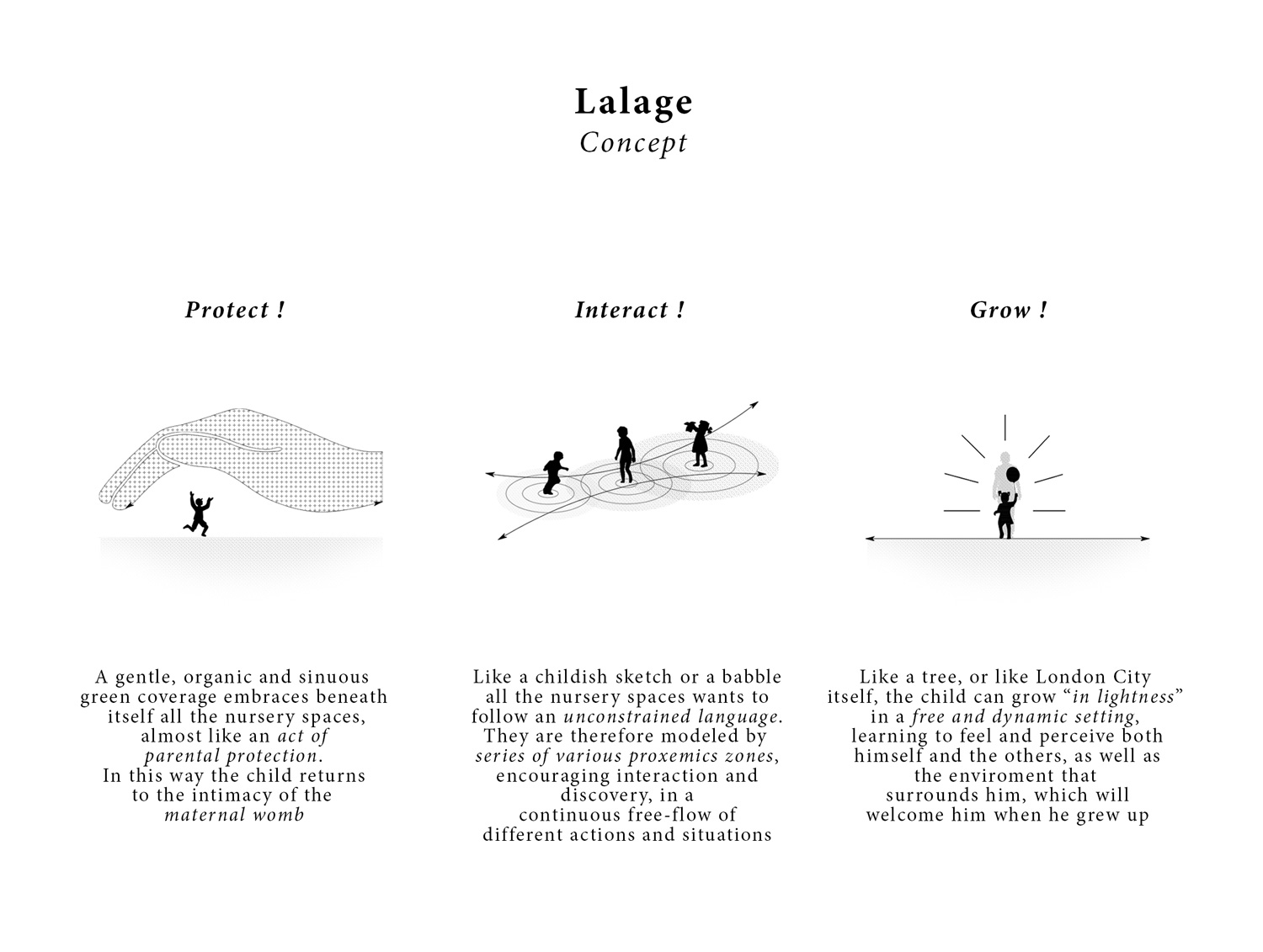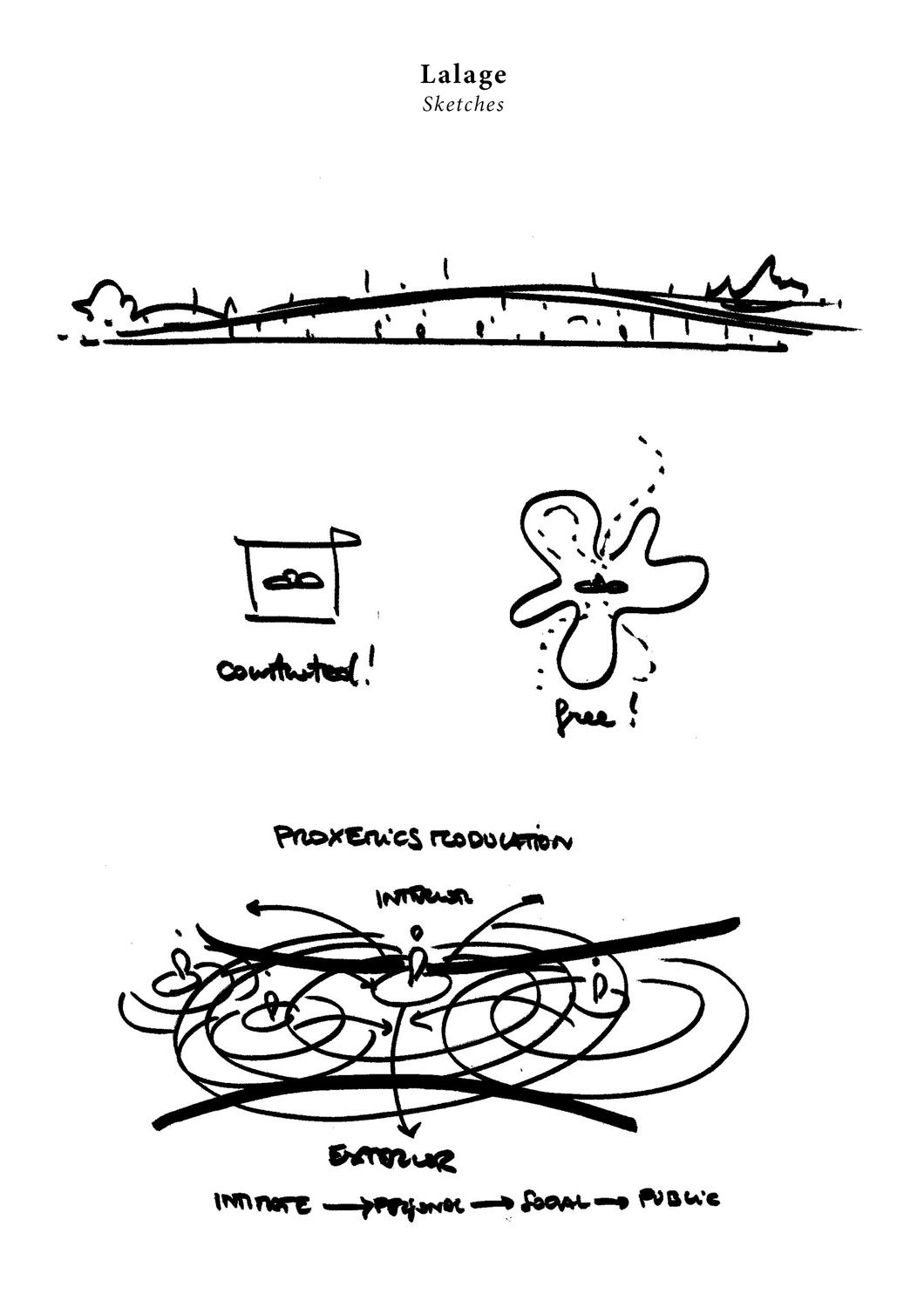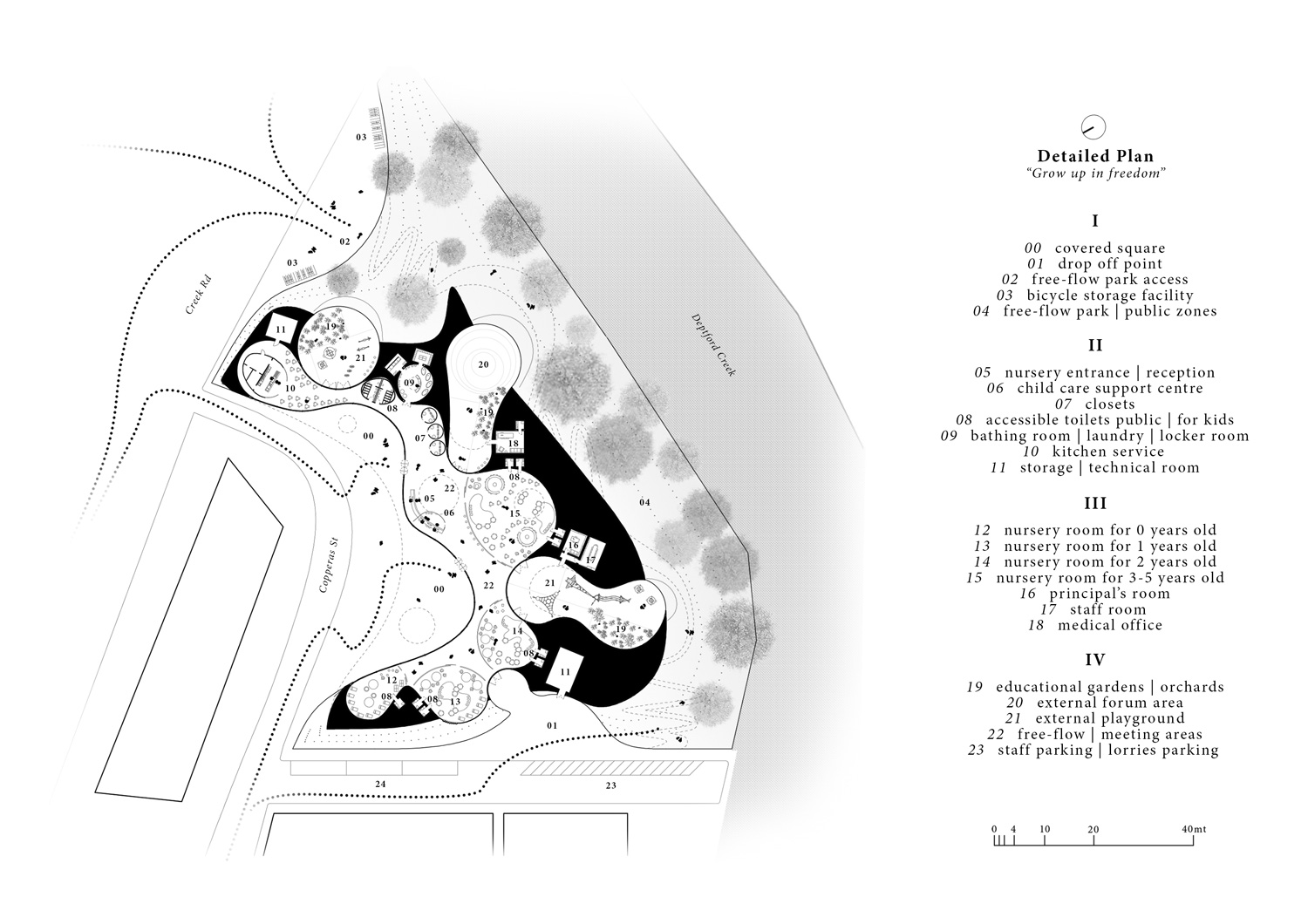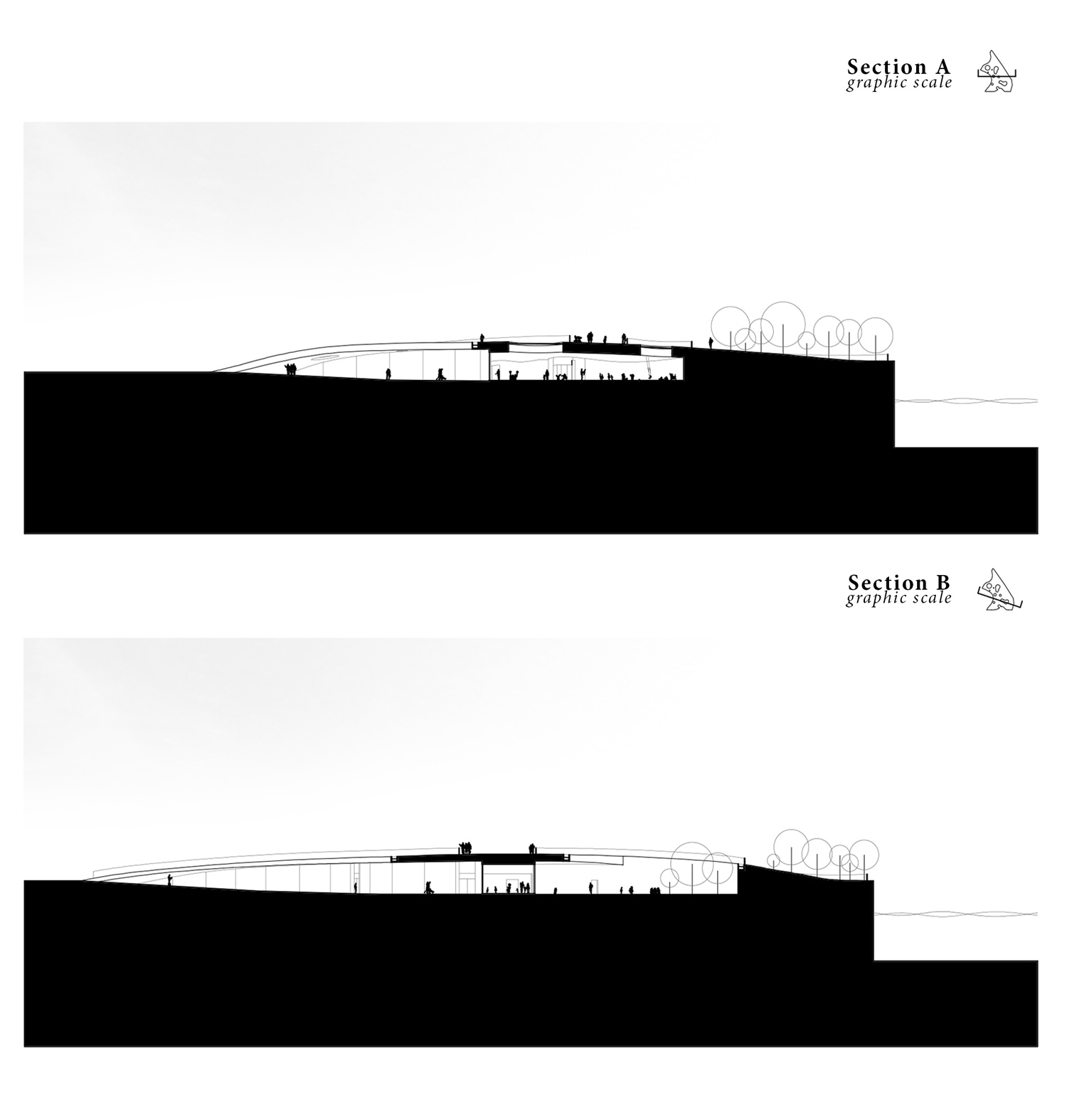1510-ECH-LON.GB-2015
Client: AWR International Ideas Competition
Status: Competition (2015)
Location: London, United Kingdom
Coordinates: 51.480866, -0.017219
Climate: Temperate, Oceanic / maritime
Material: Concrete
Environments: Riverside, Urban
Visualizer: Studio
Scale: 6.840 ㎡ Medium
Types: Education, Nursery
«I shall tell you what I dreamed last night,» he says. «In the midst of a flat and yellow land, dotted with meteorites holes and erratic boulders, I saw from a distance the spires of a city rise, slender pinnacles, made in such a way that the moon in her journey can rest now on one, now on another, or sway from the cables of the cranes. The city of your dream is Lalage. Its inhabitants arranged these invitations to rest in the night sky so that the moon would grant everything in the city the power to grow and grow endlessly. There is something you don’t know,» he adds. «The grateful moon has granted the city of Lalage a rarer privilege: to grow in lightness.» Italo Calvino, Invisible Cities
“I cannot draw limits for you within which you must act, but I can offer you the space needed to grow.” Jorge Luis Borges
How do you develop a space suitable for the growth of a child? And in this space, what strategies are able to provide him an healthy and solid learning of himself and others? Maybe the answer can come from the child himself. His needs and methods, his times and spaces construct a sort of lexicon, a real and proper language. A language that has no limits and bounds, and it is totally unconditional, innocent, true and instinctive. A language which, before being developed, it must be protected and preserved.
If we think about the naivety of the movements and the proxemics of a baby, the curvaceous simplicity of his early drawings or the expressiveness of a babbling, we can immediately perceive a primary need: the need to grow up in freedom. So first of all, the plan for this Nursery School wants to testify the needs of the child, by complying his instincts and materializing all these concepts in a building that, almost like a living being, it is able to grow, to ensure protection and at the same time to encourage connections and interactions. To take care of him.
The extension of the site area, as strategic for the district of Greenwich as currently left to itself, allows to think about a new typological landmark; a free, spontaneous and unique “organism” capable of combine the culture of green spaces -as appreciated in London as throughout the entire England-, with the childish recklessness, that cannot be restricted to a set of harsh and static cold walls, but rather should be supported by an environment as gentle as dynamic and vibrant. The walls are replaced by sinuous transparent surfaces, alternated with more physical and “material” ones. The livable spaces are more soften, the flows are free and continuous like streams, while the outdoor spaces, both public and private, are cleverly interconnected, turning into “open air rooms”. In this specific setting, the child can learn through play, discover through his senses and perceive the external environment that surrounds him. And we can learn from the child.
Referring to what is explained in the concept, the project for the Nursery School tries to materialize all these arguments in a consistent and coherent way.
As explained above, the design for this Nursery School appears as a “living organism”. Starting from the functional layout to its formal figuration, it is easy to imagine that concept and find it first of all as the embodiment of a research for an “ideal space” that result directly from the childish proxemics.
Since each child –like all of us- has extremely personal levels of interaction and relationship with others and the environment –with a well-defined range between the private sphere and the public sphere- the spaces of the nursery trying “mold and change” constantly to accommodate these different relational levels.
From this rise the spatial continuity which, to the classic layout made of “straight lines, angles and boxes”, prefers flows as much as possible free from constraints. Here the child can freely assert his own personal independence!
This is, at last, a sort of figuration of the child’s personality, which it is spontaneous, like its own language, but not yet “rectified” by difficulties and conditions of the “adult world”.
Practically speaking, almost all of the site area is literally “covered” with a surface that it is variously perforated and modulated in its orography, incorporating beneath itself all the nursery school functions. In this way there is no distinction between the parts, between green areas and the building; the building is set to be a garden and a nursery at once, usable in its entirety, thus becoming a typological landmark. A sort of “landscape building” that becomes at the same time a strong element of urban aggregation.
All functional areas required by the brief were then designed according to this concept, with a special attention to the relations between them.
In particular the various nursery rooms, which however have the same free layout, are placed in contact with the large common free-flow area, in order to promote a wide spectrum of interaction between different ages.
Similarly act the outdoor areas dedicated to the nursery which, embedded into three large circular holes on the green outer surface, becomes “open air rooms” or some sort of “gardens in a garden”; they comprise playgrounds, educational gardens and areas for outdoor lessons, as well as access to the service areas of the nursery. These last, such as the principal’s room, the staff room and the medical office, acquire a more regular feature that emphasizes the binomial already shown of “childish” and “mature”.
Finally, even matter plays an important role in the project. In fact, the variety of types of surface used also allows the children to learn through the senses, touching, seeing, feeling and sensing the environment around him, releasing him from a sterile and nameless environment. The space becomes “didactic”.
